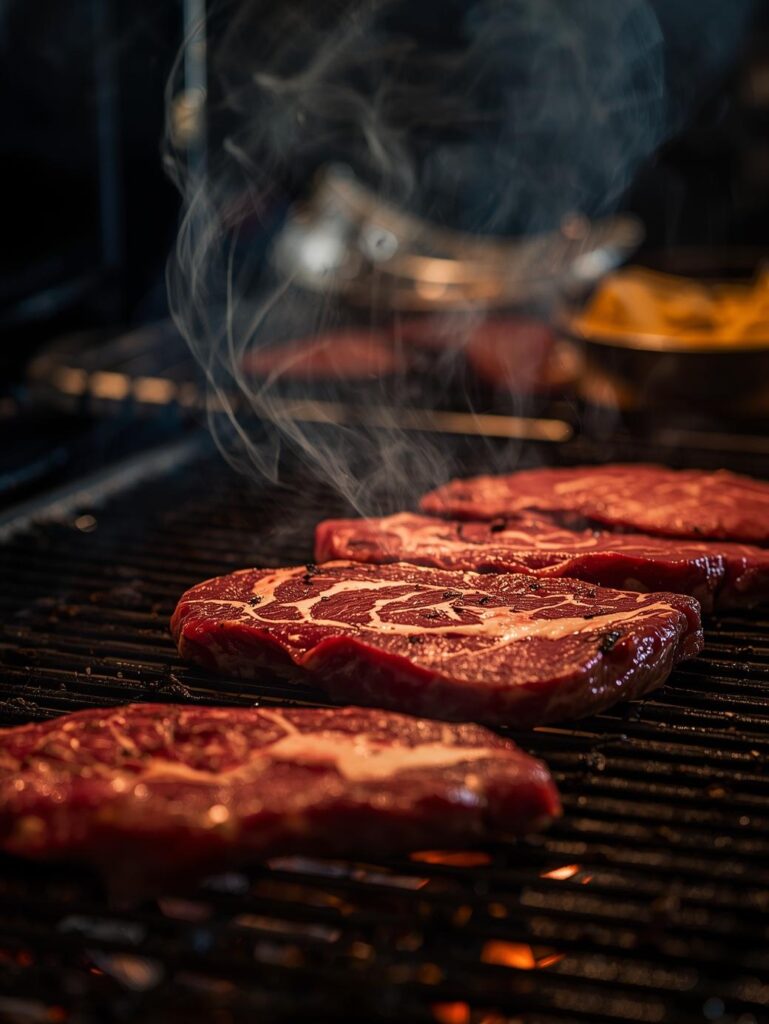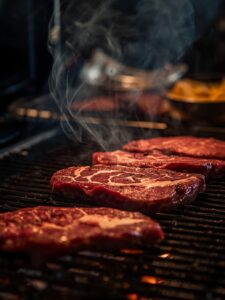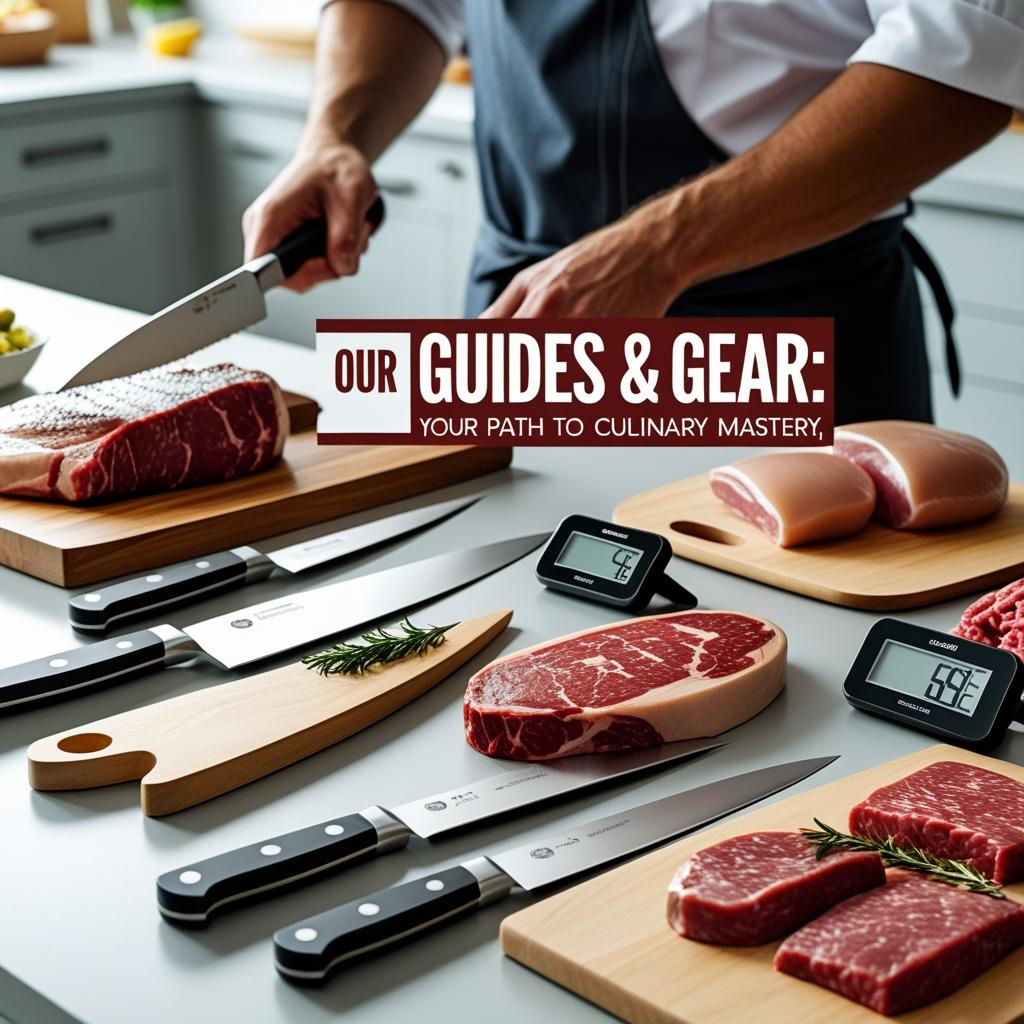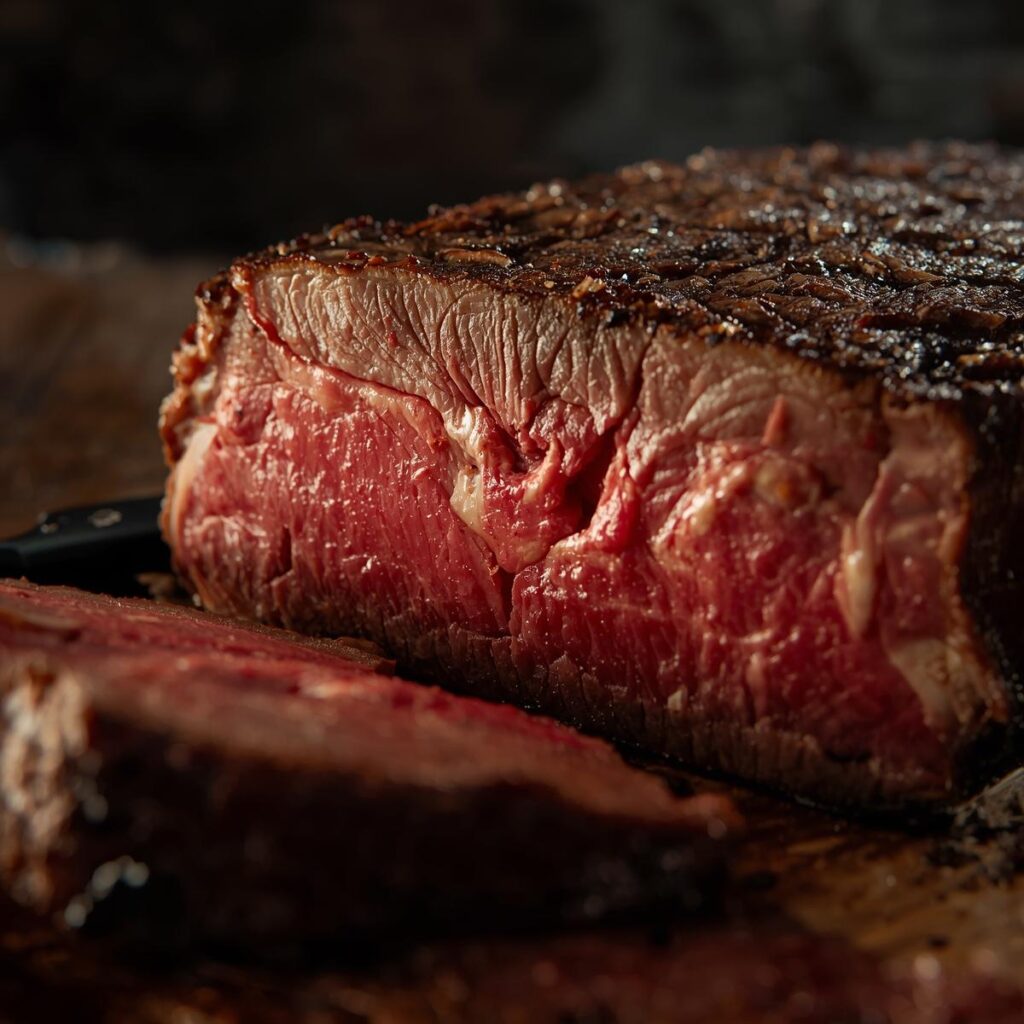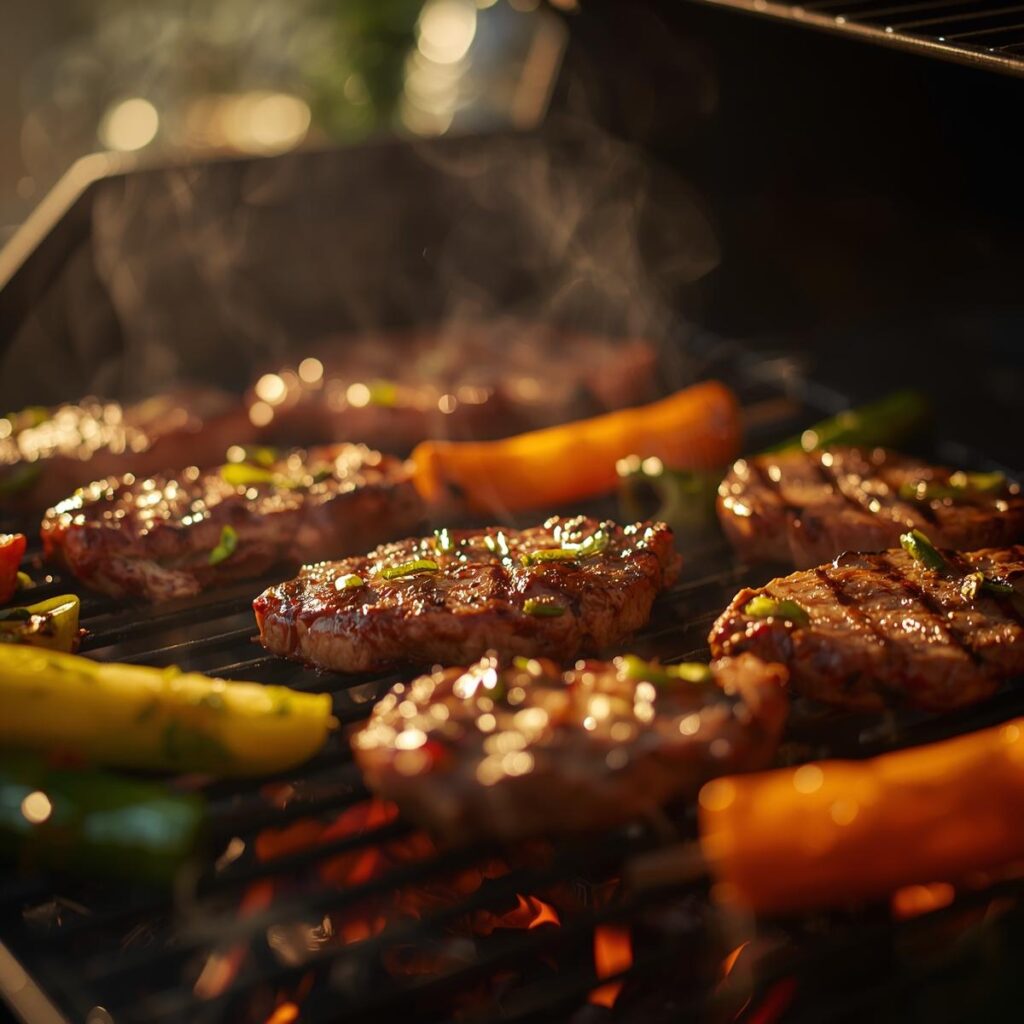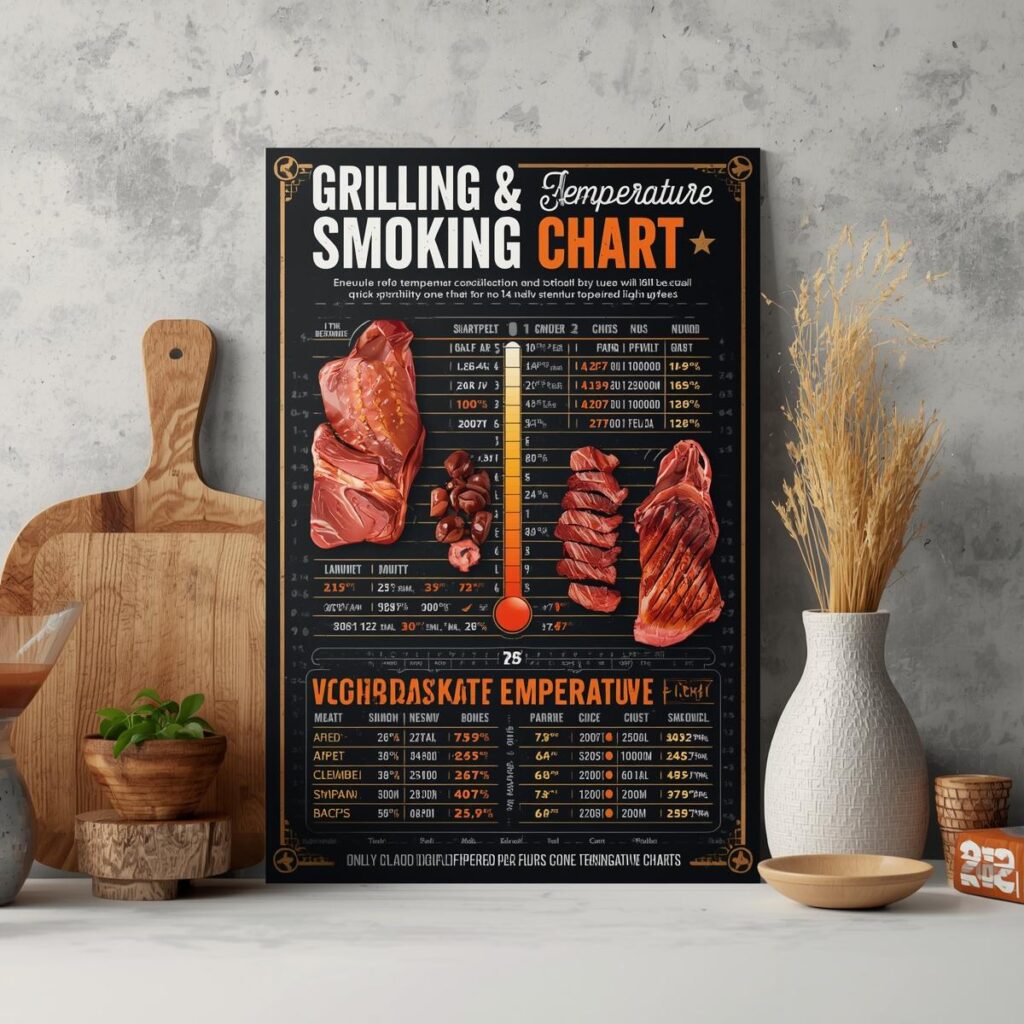Expert’s Note: This guide is part of our comprehensive BBQ Methods & Techniques Encyclopedia. Explore our complete master guide to become a true grilling expert.
Table of Contents Hide ContentsWhat Nobody Tells You About Buying Meat for Grilling
The vast majority of grilling guides focus on the cooking process: the temperature, the technique, the rub, and the sauce. And while those things are important, they’re only half the story. The truth is, the single most impactful decision you can make for your barbecue is not made with a spatula in your hand, but at the butcher counter. The secret to a phenomenal meal starts with buying meat for grilling.
Buying Meat for Grilling
What Nobody Tells You About Buying Meat for Grilling
This weekend, we’re inviting you to take on a new challenge. Consider this your Sunday Experiment—a shift in perspective that will change your grilling game forever. We’ll reveal the simple but often-overlooked secrets that professional chefs and pitmasters know about selecting the best meat. By the end, you’ll be a pro at the first and most crucial step of any great meal.
New to meat selection? Start with these essential guides:
The First Secret: Read the Marbling, Not Just the Label
Most people look for a USDA label, but a truly informed buyer looks at the marbling.
What is Marbling? Marbling is the small, white flecks of intramuscular fat found within the muscle of the meat. As the meat cooks, this fat melts, basting the muscle fibers from the inside out. This is what creates a rich flavor and a tender, juicy texture. A piece of meat with a lot of marbling will have a better flavor and be more tender than a piece with less.
The USDA Connection: The USDA grading system (Prime, Choice, Select) is based almost entirely on marbling. A USDA Prime cut has the most marbling, while a USDA Choice cut has a moderate amount. For a detailed breakdown of the difference, read our guide on Prime vs. Choice Beef: Is the Upgrade Worth It?. When you are buying meat for grilling, look for a cut with a good, even distribution of marbling throughout.
Suggested Image Alt Text: A close-up of a raw ribeye steak showing abundant white flecks of fat, illustrating the importance of marbling for meat quality.
Essential Knowledge: Understand your labels and grades:
The Second Secret: Match the Cut to the Cook
Not all cuts of meat are created equal, and some are better suited for grilling than others. A great grill master knows that the cut of meat should be chosen based on the cooking method. This is a fundamental grilling meat tip.
Hot and Fast (Grilling): For a quick, high-heat cook, you need a tender cut of meat that won’t get tough. Look for cuts from the loin and rib, such as:
-
Ribeye: The king of grilling cuts. The generous marbling makes it incredibly flavorful and juicy.
-
New York Strip: A great balance of tenderness and flavor. It has a nice fat cap on one side that adds flavor.
-
Filet Mignon: The most tender cut of beef, with a mild flavor. It is a lean cut, so it is best to not overcook it.
Low and Slow (Barbecuing): For a long, slow cook, you need a tough, fatty cut of meat that will break down and become tender over time. These cuts are often more affordable.
-
Brisket: The ultimate barbecue cut. It’s tough and full of collagen, which breaks down into gelatin over a long cook, making it incredibly tender.
-
Pork Shoulder: The perfect cut for pulled pork. It has a lot of fat and connective tissue that will break down and create a rich, juicy result.
-
Ribs: Both beef and pork ribs are great for a low-and-slow cook.
This is a key concept that we explain in our guide, What’s the Difference Between Grilling and Barbecuing?, as it’s the foundation of all outdoor cooking. When you’re buying meat for grilling, you need to decide whether you’re going for a sprint or a marathon.
Suggested Image Alt Text: A collection of different cuts of meat, including a steak and a brisket, to show the variety of options when buying meat for grilling.
The Third Secret: Get to Know Your Butcher
In an age of packaged meat, the value of a good butcher is often lost. A relationship with a butcher is one of the best grilling meat tips you’ll ever get.
-
Freshness: A butcher’s meat is often fresher than what you’ll find in a supermarket, as it is cut in-house and not shipped in.
-
Custom Cuts: A butcher can give you a custom cut of meat that you can’t find in a package.
-
Advice: A good butcher is an expert and can give you advice on the best meat for grilling for a specific occasion.
What to Ask a Butcher:
-
“What’s the best cut for grilling right now?”
-
“What do you have that’s dry-aged?”
-
“Can you recommend a great steak for a beginner?”
Weekend Success Tips: Avoid common buying mistakes:
The Fourth Secret: A Label Isn’t Everything
“Grass-fed” and “Organic” are often seen as automatic upgrades in meat quality, but that’s not always the case for grilling.
-
Grass-Fed: This means the cow was raised on a diet of grass. It’s often leaner and has a more complex flavor, but the lack of fat can make it less forgiving on the grill. It’s an upgrade in health, but not necessarily for tenderness on the grill.
-
Organic: This refers to how the animal was raised, without antibiotics or hormones. It doesn’t necessarily mean the meat quality is better. A conventionally raised Prime cut can still have more flavor and be more tender than an Organic Select cut.
The Fifth Secret: Dry-Aged Beef Is an Experience
Dry aging is a process where a cut of meat is stored in a controlled environment for weeks or even months. The process removes moisture from the meat and allows enzymes to break down the muscle fibers.
-
The Result: A dry-aged steak has a more concentrated, complex flavor and a more tender texture. It’s often described as nutty or cheesy.
-
The Cost: Dry aging is an expensive process, so dry-aged steaks are often more expensive. But if you’re looking to elevate your grilling, this is one of the best grilling tips to know.
The Sixth Secret: Sometimes, a Cheaper Cut Is Better
While it’s easy to assume the most expensive cut is the best, that’s not always the case. For some dishes, a cheaper cut is actually better.
-
Burgers: The best burgers are made with a mix of ground chuck and sirloin. The chuck provides fat for flavor, while the sirloin provides a great beefy taste.
-
Tacos or Stews: Cheaper cuts like chuck or round steak are perfect for these dishes because the long cooking time will break down the tough muscle fibers and make them tender.
Ultimately, your goal is to find the right cuts of meat for the job.
🔗 Official Food Safety & Quality Resources
For official information on meat grading, labeling, and safety, consult these authoritative sources:
🏛️ USDA Meat Grading Standards
Official government guidelines for Prime, Choice, and Select grades
📋 Food Safety and Inspection Service
Federal standards for meat safety and labeling
🎓 USDA Agricultural Marketing Service
Official grade standards for meat and poultry
- These external resources provide additional authoritative information on meat grading standards and food safety guidelines.
Now that we’ve covered the most common secrets… Let’s bring it all together with our final thoughts on your Sunday Experiment.
Conclusion: From Guessing to Knowing
The journey to a perfect meal on the grill starts long before you fire up the coals. It starts at the butcher counter, armed with the knowledge of what to look for and what questions to ask. By understanding the importance of marbling, matching the cut to the cook, and knowing when to talk to a butcher, you can elevate your grilling from a hobby to an art form. The best grilling advice we can give you is this: invest in a great piece of meat, and the rest will fall into place.
Ready for Your Sunday Experiment?
Join thousands of home chefs who are mastering the art of selecting the perfect meat for the grill.
Continue Your Weekend Cooking Journey: Explore more weekend-friendly guides:

